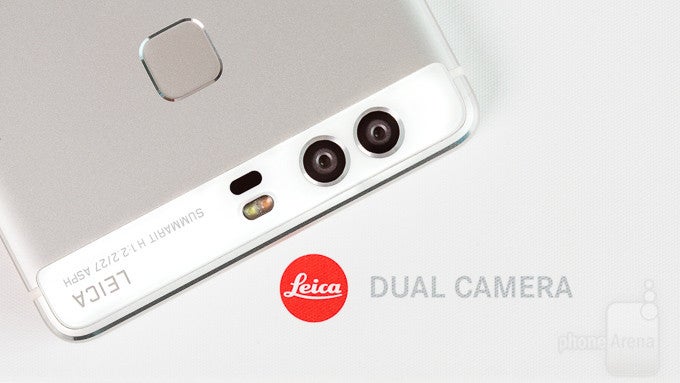Leica was "deeply involved" in engineereing the Huawei P9 dual camera

A smartphone like the Huawei P9 can't go unnoticed. Announced earlier this month, it made headlines with its intriguing dual camera, co-engineered with renowned optics company Leica. This alone was enough to draw shutterbugs' attention, but to fuel excitement even further, Huawei promoted its latest flagship with a mighty bold tagline – reinvent smartphone photography.
Needless to say, expectations for the Huawei P9 and its photographic capabilities were set high, which is why the "news" of Leica having almost no input in designing the P9's dual camera sparked quite the controversy. Allegedly, the phone's camera was only "certified" by the German optics company, not co-engineered with it. In other words, it was speculated that the Leica branding was mostly for show. These reports have been inaccurate, as it becomes clear from this official joint statement from Huawei and Leica, embedded below.
To summarize, it is true that the Huawei P9 camera module was manufactured by a third party, Sunny Optical. However, it is the result of Leica's expertise in lens calculation. The latter was also involved in designing the camera's mechanical construction and developing its image processing algorithms. Hopefully, this should put to rest all claims that the Huawei P9 camera has almost nothing to do with Leica. And if you're curious to know how its photos look like, be sure to read our Huawei P9 review.
In February, Huawei and Leica announced a long-term strategic partnership. The camera function is the most used smartphone application and our aim is to bring it up to the high standards demanded by the Leica product philosophy. Leica brings to the cooperation their expertise gathered from decades of experience in optical engineering and optical design. The collaboration between Huawei and Leica aims to deliver the best possible picture quality in the smartphone segment.
Both companies have been working closely to co-engineer Huawei’s recently launched premium smartphone – the P9 – based on innovation and excellent craftsmanship.
The camera module of the P9 series and the achievable picture quality is the result of the intensive technological collaboration between Huawei and Leica. Leica has been deeply involved in the development of the camera-module of the P9 and P9 Plus. Our joint objective was to achieve the best possible image results and optical imaging performance in order to provide consumers in the smartphone photography segment with the best possible picture quality. The result raises smartphone photography to an entirely new level.
Our co-engineering is deeply embedded in the product and Leica’s contribution has involved:
Leica’s globally recognized expertise is based to a large extent on the ability to guarantee the narrowest tolerances on the market. This justifiable claim to excellence is naturally also an integral component of the technology partnership and is implemented in Huawei’s production processes of the P9 camera module to ensure uncompromising quality.
Both companies have been working closely to co-engineer Huawei’s recently launched premium smartphone – the P9 – based on innovation and excellent craftsmanship.
The camera module of the P9 series and the achievable picture quality is the result of the intensive technological collaboration between Huawei and Leica. Leica has been deeply involved in the development of the camera-module of the P9 and P9 Plus. Our joint objective was to achieve the best possible image results and optical imaging performance in order to provide consumers in the smartphone photography segment with the best possible picture quality. The result raises smartphone photography to an entirely new level.
Our co-engineering is deeply embedded in the product and Leica’s contribution has involved:
- Collaborative development, evaluation and optimization of optical design (lens calculation) in compliance with Leica standards.
- Collaborative development of the mechanical construction of the camera module to reduce stray light effects (“ghost and flare”).
- Definition of imaging quality in terms of color rendition/color fidelity, white balance, stray light reduction (“ghost & flare effects”), exposure precision, dynamic range, sharpness and noise characteristics.
- Processing of image data with the aid of long-standing Leica optical and signal processing expertise.
- Definition of the most stringent common quality standards and production requirements for serial production by Huawei to ensure consistently high quality.
Leica’s globally recognized expertise is based to a large extent on the ability to guarantee the narrowest tolerances on the market. This justifiable claim to excellence is naturally also an integral component of the technology partnership and is implemented in Huawei’s production processes of the P9 camera module to ensure uncompromising quality.













Things that are NOT allowed: